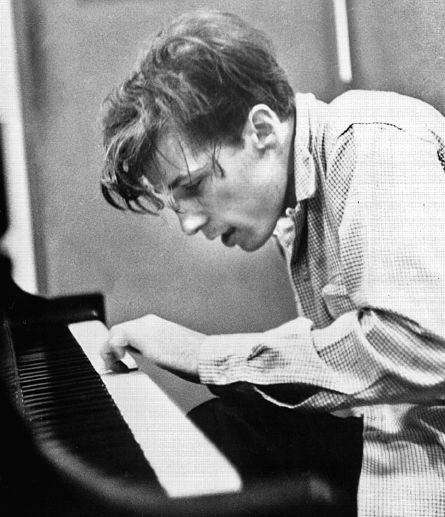GLENN GOULD (1932–1982)

The Canadian pianist Glenn Gould is remembered for making Bach, and especially his keyboard works, widely popular from the 1950s on. At that time the preferred medium was the harpsichord, which had been revived so that Bach could be played on his own instrument; audiences were specialized, to say the least, and pianists didn’t play much Bach. Significantly, Gould’s first great success was a best-
Thus his playing of Bach’s Prelude No. 1 in C sounds less like chords made by a swishing harp than a hollow series of pings; yet the dynamics fall and rise, rise and fall so purposefully that this simple piece produces an almost majestic effect. Notice how carefully p and f moments are coordinated with the harmonies spelled out by the chords. In the fugue, Gould is in his element — every entry is loud and clear!
Like many performers, old and new, classical and popular, Gould derived some of his fame from his eccentricities. At concerts he had to have the piano bench very low and the temperature in the hall very high. On our recording you will hear weird little noises behind the music; even the top recording engineers couldn’t filter out Gould’s constant humming or yelping when he played.
Gould was also a popular broadcaster, promoting his pet ideas. For example, he thought that concerts were outmoded and the future of music lay with recordings. He was wrong, but it worked for him; for nearly twenty years at the end of his life, he concentrated on building up an extraordinary archive of recordings but played no concerts at all.